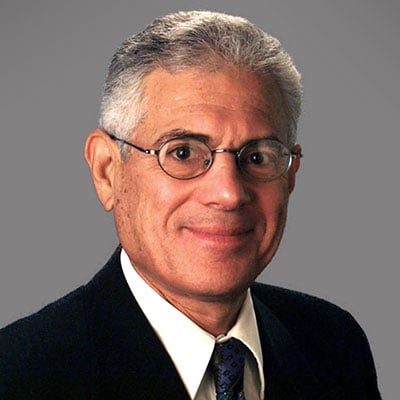Pointers For PE Firms — Post Sun Capital ERISA Ruling
Under certain circumstances a private equity (PE) fund which owns 80 percent or more of a bankrupt portfolio company (or in some cases, discussed below, less than 80 percent) is liable for 100 percent of the portfolio company's unpaid pension obligations. However, if the PE fund is formed as a partnership or LLC, this "Employee Retirement Income Security Act (ERISA) controlled group liability doctrine" applies only if the PE fund is engaged in a "trade or business" within the meaning of the Internal Revenue Code.1
In October 2012, Kirkland won a significant victory for the PE industry when a federal district court2 — rejecting a 2007 Pension Benefit Guaranty Corporation (PBGC) appeals board ruling — concluded that a PE fund (formed as a partnership or LLC) is not engaged in a "trade or business," and hence is not liable for its bankrupt portfolio company's unpaid pension obligations.
In reaching its conclusion that the PE fund was not engaged in a trade or business, the court rejected the pension plan's argument that the PE fund (which is not engaged in a trade or business) should be viewed as a single entity along with its related management and general partner entities (which are engaged in a trade or business). Instead the court respected as separate entities (1) the PE fund investor (which had no employees, constituted simply a pool of investment capital holding passive investments, and had only investment income, i.e., dividends and capital gains) and (2) the PE fund's related management and general partner entities (which did have employees, involvement in portfolio company operations, and management fee income).
Thus the court refused to attribute the management and GP entities' activities to the PE fund and rejected the 2007 PBGC decision which had "incorrectly attributed the activity of the general partner to the investment fund."
In a separate issue, the court considered the applicability of an ERISA statutory provision requiring a transaction entered into with a principal purpose of evading or avoiding ERISA controlled group liability to be disregarded.
This issue arose because the PE sponsor had from the beginning split its investment in the bankrupt portfolio company between two of its funds (formed five years apart), with neither fund owning 80 percent of the portfolio company, although the funds together owned 100 percent of the portfolio company. The court found that splitting the investment did not, by itself, satisfy the ERISA statutory test for disregarding a transaction, even if the PE sponsor considered the risk of ultimate ERISA controlled group liability when making the initial split investment. Because the sponsor had other reasons for the split (e.g., allowing each of its two funds formed five years apart to own a portion of the investment), the court held that neither fund owned 80 percent of the bankrupt portfolio company for purposes of imposing ERISA control group liability.
This may not be the last word on either of these issues because the district court's decision is being appealed and the PBGC or another pension plan may sometime in the future seek to relitigate the issues in a similar case.
Finally, because the ERISA provisions that could make a PE fund liable for a bankrupt portfolio company's pension liabilities are exceedingly complex, each PE fund investment (and each restructuring of an investment) should be reviewed with care. We discuss below four additional examples of the complexities encountered in applying the ERISA controlled group liability rules:
- Application of the 80 percent test to a PE fund's ownership of a portfolio company differs materially depending on the portfolio company's form of organization. If the portfolio company is a corporation, 80 percent is measured by vote or value, whereas if the portfolio company is a partnership or LLC (not electing to be taxed as a corporation), 80 percent is measured by capital or profits (and voting power is irrelevant).
- In determining whether PE fund owns 80 percent of a portfolio company, circumstances exist where a portfolio company's stock held by a third party is disregarded (e.g., stock held by portfolio company's employees subject to restrictions), so that where PE fund owns 70 percent of portfolio company's stock and portfolio company's management own the remaining 30 percent (subject to restrictions), PE fund is viewed (for ERISA group liability purposes) as owning 100 percent (thus exceeding the 80 percent threshold).
- The additional requirement that an entity must be engaged in a trade or business in order to be subject to the ERISA group liability doctrine applies only to an entity formed as a partnership or LLC (which has not elected to be taxed as a corporation), so a controlled group member (either PE fund or solvent portfolio company) which is a corporation (or a partnership or LLC electing to be taxed as a corporation) need not be engaged in a trade or business in order to be liable for a bankrupt group member's unpaid pension liability.
- Because the ERISA controlled group liability doctrine covers all 80 percent members of a controlled group, it is unclear whether two portfolio companies both 80 percent owned by PE fund (which is a partnership or LLC) would be liable for each other's unfunded pension fund liabilities. In other words, where PE fund formed as a partnership or LLC owns 80 percent of bankrupt portfolio company A and 80 percent of successful portfolio company B, it is unclear whether successful portfolio company B (bankrupt portfolio company A's "sister" company) is liable for A's pension obligations even though PE fund (as a partnership or LLC not engaged in a trade or business) is not liable for A's pension obligations.
1 In the unlikely event a PE fund formed as a partnership or LLC elected (for federal income tax purposes) to be taxed as a corporation different rules would apply. We assume for purposes of this PEN that no PE fund formed as a partnership or LLC has elected to be taxed as a corporation.
2 Sun Capital Partners v. New England Teamsters & Trucking Industry Pension Fund.
REPRINTED WITH PERMISSION FROM THE NOVEMBER 1, 2012 EDITION OF LAW360 © 2012 PORTFOLIO MEDIA INC. ALL RIGHTS RESERVED. FURTHER DUPLICATION WITHOUT PERMISSION IS PROHIBITED




